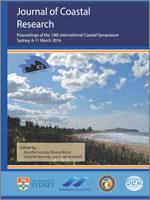Martín-Antón, M.; Negro, V.; del Campo, J.M., López-Gutiérrez, J.S., and Esteban M.D., 2016. Review of coastal Land Reclamation situation in the World. In: Vila-Concejo, A.; Bruce, E.; Kennedy, D.M., and McCarroll, R.J. (eds.), Proceedings of the 14th International Coastal Symposium (Sydney, Australia). Journal of Coastal Research, Special Issue, No. 75, pp. 667–671. Coconut Creek (Florida), ISSN 0749-0208.
Land reclamation from the sea has been occurring since ancient times, especially in harbors. The vast majority of the world's docks now occupy spaces that were once water and this heavily influences the coastal landscape. Japan has been one of the country's most needing to expand into the sea due to its topography and land requirements for agriculture, urbanization and, especially, industries and port facilities. Ninety per cent of Tokyo Bay's coastline is reclaimed land, which is almost 250 km2 of new land. In the 21st century, this disproportionate conquest of the sea has shifted to other countries. In the Persian Gulf, the coast has been indiscriminately occupied with artificial island projects for residential purposes. Some of them are finding some difficulties, such as “The Palms” and “The World” in Dubai, with a loss of sand, which is effect of currents and waves. In China, due to economic expansion and export needs, industrial areas are spreading on the coast. Caofeidian (Bohai Bay) is the largest landfill island in the world with 150 km2, more than twice the sum of Dubai islands area. This disproportion of public works in Asia contrasts with the rest of the world. For example, the Bay of Algeciras (Spain-UK) is the largest container traffic Port in the Mediterranean with 2.5 km2 of reclaimed land, 100 times less than Tokyo Bay. A further problem associated with this practice is liquefaction, caused mainly by earthquakes, leading to ground subsidence in buildings, such as in Niigata (1964) or in San Francisco (1989), all on reclaimed land. This research paper aims to study land reclamation in the World with current statistics, geotechnical problems, the impact on the coastal landscape and future developments.





